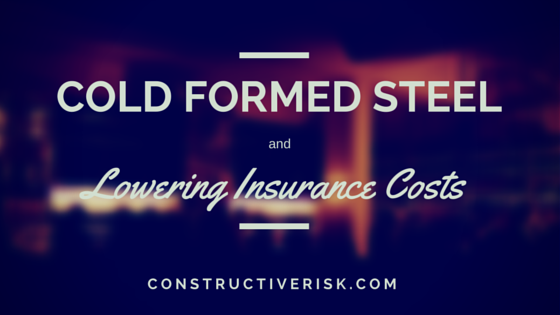Cold Formed Steel & Insurance Costs
As a senior advisor to the Steel Framing Industry Association regarding matters of insurance and risk management, as it specifically pertains to cold formed steel, I get to dive into project case data in order to determine how the difference in “construction materials” impacts insurance costs on a project basis.
I recently wrote an article which appeared in Multi-Housing News regarding this very issue (i.e. How cold formed steel compares to wood framed construction in lowered insurance costs).
Below is an excerpt from that article and below that is a button which will allow you to finish reading the entire article on MHN directly. Let me know if you have any questions about it.
——————–
RECENTLY, a major fire raced through the AvalonBay at Edgewater apartment community in New Jersey, destroying several hundred units and displacing the residents of the luxury development in the middle of winter.
As dramatic as this enormous fire was, it was by no means a singular event. In fact, even as you read this article, firefighters somewhere may be responding to yet another huge apartment blaze. The reason: The proliferation of wood-framed construction in mid-rise buildings.
One need only look at the record. In the first few months of 2014, for example, fire disasters fueled by wood framing destroyed a four-story apartment community under construction in Salt Lake City; the five-story, 396-unit Axis Apartments building in Houston; and the 300-unit Gables Upper Rock apartment community under construction in Rockville, Md. Similar events occurred throughout the year, culminating in December with one of the most spectacular mid-rise blazes of 2014 when the five-story, 526-unit DaVinci Apartment Complex under construction in Los Angeles burned to the ground.
Insurers have long been wise to these risks. “Wood” construction has a greater likelihood to burn or be damaged by fire and will be a total loss versus a partial one. Loss history for wood construction has been poor, and carriers are very restrictive of the amount of risk they will take. This drives up the cost to the builder, and actually weakens the pro-wood argument that it is less expensive than other materials. The recent major wood frame fires calls for a need to look at cost savings and particularly insurance more closely.
But insurance is more than a line item, and can seem to have as many variables as a project itself. That’s because a single commercial building project requires a range of insurance products, including property insurance, workers compensation, course-of-construction liability insurance and builders risk insurance. Complicating matters further, the cost of each of these types of insurance depends on factors unique to each individual project.
Because insurance is necessary, even if a builder shops for insurance with close attention to cost, the prevailing attitude may be to “bite the bullet” and accept insurance expenses as the “cost of doing business.”
But for a range of low- and mid-rise construction projects, there are a few options. Builders may be missing a major opportunity to trim their insurance costs where they might least expect it—through the use of cold-formed steel framing.
The simple reason is that cold-formed steel is non-combustible: It simply does not burn or contribute to the spread or intensity of a fire.


Leave a Reply